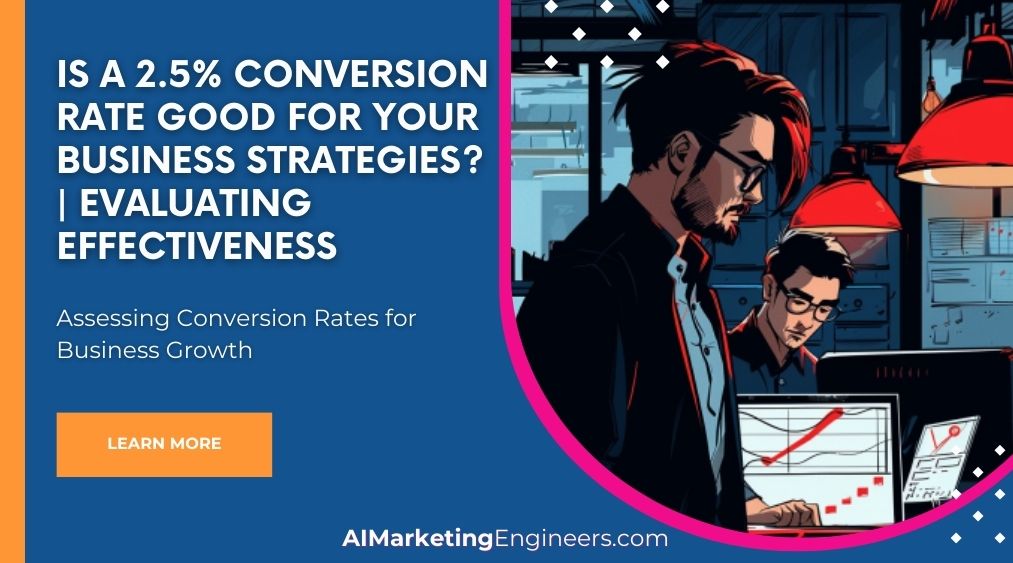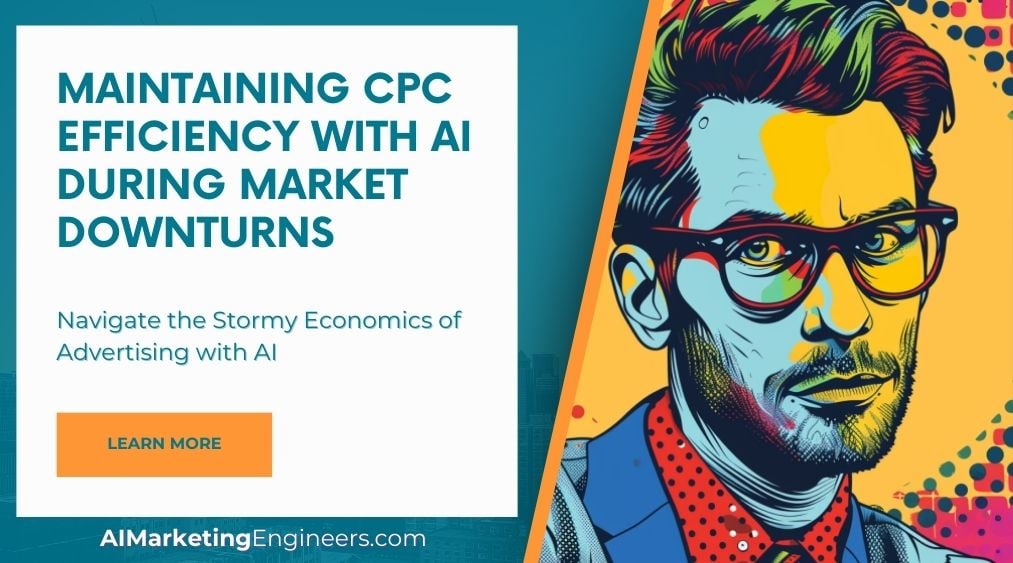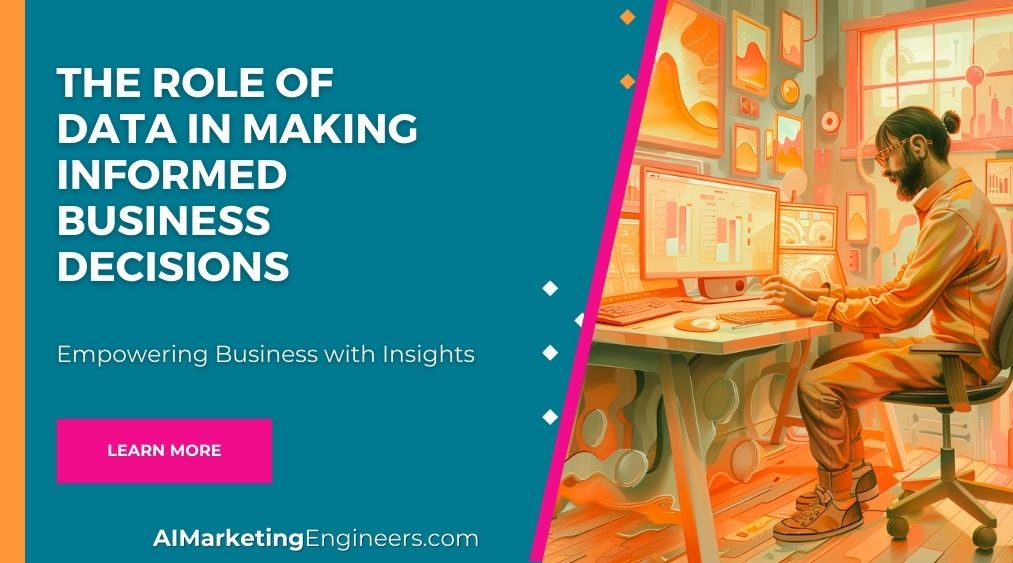Key Takeaways
✅ Average Conversion Rate: In the realm of ecommerce, a 2.5% conversion rate is often cited as the norm. Research indicates that conversion rates can hover between 2.5% to 3%, but for smaller platforms, like Shopify stores, it might be closer to 1.4%. Understanding where your rates fall in this spectrum is crucial for gauging success.
✅ Industry Variations: A 2.5% figure doesn't mean the same thing across the board—some industries like food and beverages may see averages around 3.1%, while others, such as skincare, are at 2.4%. It's vital to know your industry's standard to truly measure up.
✅ Room for Improvement: Achieving a 2.5% conversion rate doesn't spell out complacency. A minor tweak to hike this number to, say, 3%, could potentially lift your revenue significantly without upticks in traffic—optimization here is key.
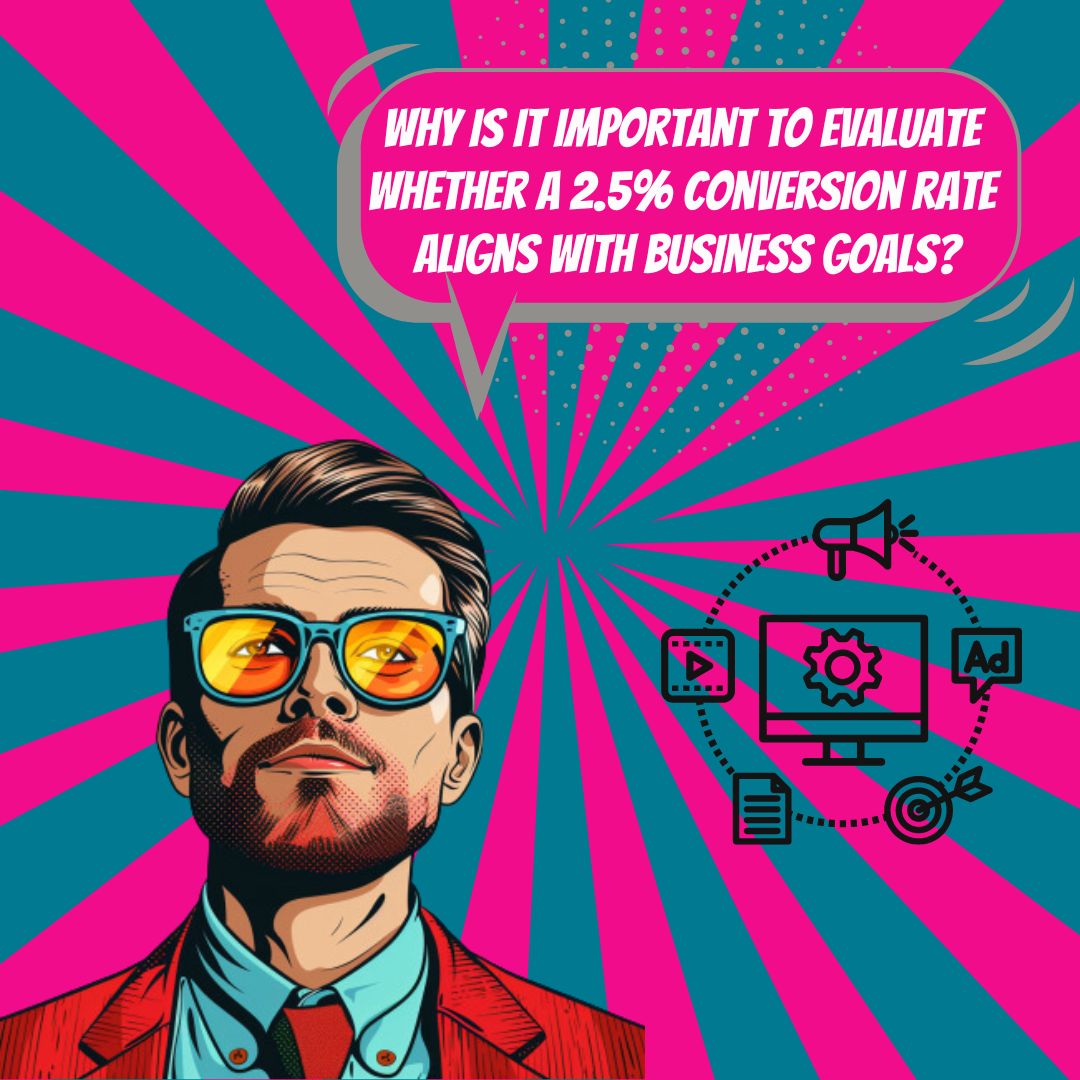
Introduction
Are you settling for just "average" when it comes to your conversion rate? At first glance, sitting at a 2.5% conversion rate might seem like you've hit the standard mark, but the true question is—can your business do better? The buzz around conversion rates is not just about hitting a magic number; it's about understanding the efficiency of your business strategies and the potential to turn a visit into value.
In this piece, we're not just painting by numbers. We're equipping you with the context to evaluate if a 2.5% conversion rate is the right fit for you, considering the unique fabric of your industry. As you sink your teeth into this article, we invite you to challenge the status quo, think beyond averages, and explore ways to ramp up that percentage point. With a blend of industry wisdom and actionable tips, we aim to help you make each click count and spark a noticeable uptick in your business outcomes.
Prepare yourself to embark on a journey that promises to unlock not just the secrets of achieving but exceeding the so-called average conversion rate. This isn't about settling for good enough—it's about defining what success looks like for you and how to grasp it. Join us as we delve into personalized strategies, tools, and insights that stand to transform your conversion rate from satisfactory to sensational.
Top Statistics
| Statistic | Insight |
|---|---|
| Average Conversion Rate: The average conversion rate across all industries is around 2.5% to 3%. | This range sets a baseline for businesses to compare their performance and assess if a 2.5% conversion rate aligns with industry averages. |
| Industry-Specific Conversion Rates: For example, B2B Services see a 3.2% rate. | Knowing your industry-specific average can help target your business strategies more effectively, rather than relying on generic benchmarks. |
| Device Influence: Desktop shows a conversion rate of 5.06% versus mobile's 2.49%. | With mobile traffic dominating, businesses must optimize their mobile user experience to close the gap with desktop conversions. |
| Impact of Conversion Rate Optimization (CRO): A 0.5% increase can result in a million-dollar increase in annual revenue. | The potential revenue increase underscores the value of investing time and resources into fine-tuning conversion strategies. |
| Marketing Strategies: 29% of marketers view conversion rate as a crucial indicator of success. | This statistic reflects the prioritization of conversion rate among marketers, pinpointing it as a key measure of a campaign's effectiveness. |
What is a Conversion Rate?
When we talk about conversion rates, we're discussing the percentage of visitors to your website or users of your service who take a specific action that you want them to take. It could be signing up for a newsletter, making a purchase, or booking a consultation – essentially, it's a measure of the effectiveness of your marketing efforts. Understanding and tracking these rates is vital because it helps you gauge the success of your website and campaigns. Each touchpoint with customers, be it a website visit, an email they open, or interaction on social media, has its own conversion metrics. These figures are the heart rate monitor for your business's online presence, telling you where you're healthy and where you need a check-up.
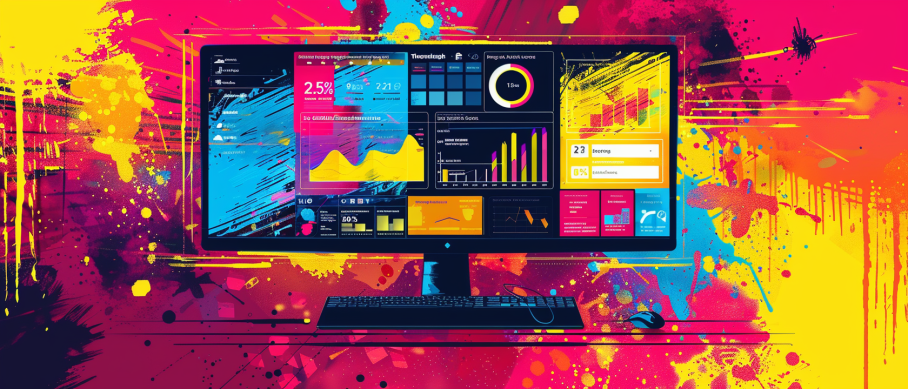
Understanding the Average Conversion Rate
Think of industry conversion rates like a community's average temperature. There's a general expectation, but your comfort level might differ depending on your own tolerance to heat or cold. Similarly, conversion rates vary by industry. What's 'hot' for one might be 'cool' for another. Industry benchmarks set the stage, but you absolutely must consider the season – or in this case, the factors like your industry's norms, your target audience, and which marketing channels you're using. E-commerce sites might see numbers around 2-3%, while B2B businesses could expect less. In specialized sectors like finance or healthcare, trust and long decision cycles play a crucial role, potentially affecting those percentages.
Evaluating a 2.5% Conversion Rate
Let's slice the data: Is a two and a half percent conversion rate cause for a victory dance or a strategy shuffle? Well, whether that 2.5% puts you in the winner's circle depends on a blend of factors. Comparing your rates against industry norms provides a good starting point. Yet, you must consider the nature of your marketing strategies and the particular quirities of your target audience. For example, high-ticket luxury goods providers might be thrilled with a 2.5% rate, while a dollar store online might view that same number with furrowed brows.
Improving Conversion Rates
Every marketer dreams of soaring conversion rates, and the paths to that summit involve methods like A/B testing and refining the user experience. Crafting clear and enticing calls-to-action is akin to setting up signposts for your customers, guiding them effortlessly towards the checkout. This isn't a 'set it and forget it' game – continuous testing and optimizing are your compass and map to untold treasures. There's an entire toolbox at your disposal, from heatmaps to user surveys, to tweak and enhance your rates. Regularly checking under the hood with these tools ensures your marketing engine keeps purring smoothly.
Is a 2.5% Conversion Rate Good for Your Business Strategies?
In the world of business, a clear-eyed assessment of your conversion rates can tell you a lot about the health and performance of your marketing efforts. Considering a 2.5% conversion rate as either good or bad requires context. It's a number that sits on the scale, waiting to be measured against a gamut of shifting variables like industry trends, the effectiveness of your marketing campaigns, and the always-evolving behaviors of consumers. Keep in mind, a rate that's subpar for one business could be stellar for another. It's about finding your sweet spot and continuously working towards numbers that reflect the growth and success of your strategies.
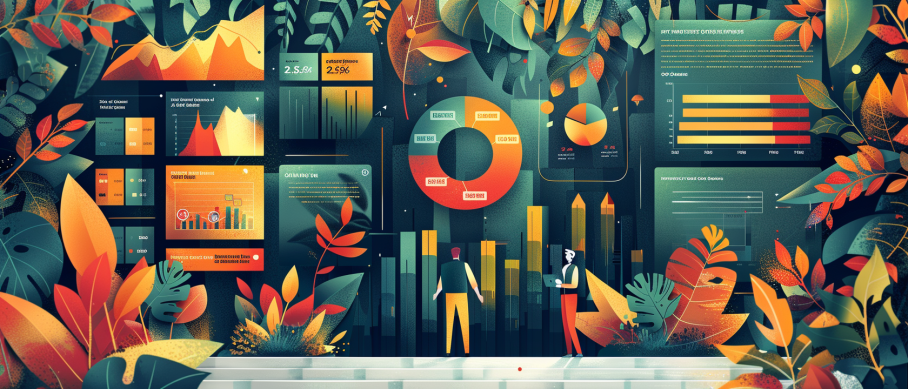
AI Marketing Engineers Recommendation
Recommendation 1: Benchmark Against Industry Standards and Competitors: A 2.5% conversion rate may seem decent at a glance, but it's crucial to compare it against industry norms and your competitors. For instance, according to Wordstream, the average landing page conversion rate falls around 2.35%, but the top 25% are converting at 5.31% or higher. Therefore, aim for a benchmark tailored to your sector – if you're in finance or e-commerce, your targets may be higher. Use this data to gauge if a 2.5% conversion rate aligns with your business's potential or if there's significant room for improvement.
Recommendation 2: Leverage Personalization and User Experience Optimizations: In today's marketing climate, personalization isn't just a buzzword, it's a necessity. With current technologies allowing for more tailored user experiences, customers expect businesses to understand their needs. By using data analytics to segment your audience and create more relevant content, you can substantially improve conversion rates. Research by Econsultancy found that 93% of companies see an uplift in conversion rates from personalization. Employ a/b testing to refine messages, offers, and calls to action for varied audience segments to boost that 2.5% to a higher level.
Recommendation 3: Implement Advanced Conversion Rate Optimization (CRO) Tools: To move beyond a 2.5% conversion rate, utilizing advanced CRO tools can make a significant difference. Tools like Optimizely or Hotjar provide insights into how users interact with your site, enabling you to make data-driven decisions. These platforms offer features like heatmaps, session recordings, and A/B testing that uncover obstacles in the conversion funnel. By identifying and addressing these barriers, you can enhance the user journey and potentially increase your conversion rates beyond the 2.5% average, making your strategies more effective and your business more profitable.
Relevant Links
- Revolutionize Your Digital Impact with AI Marketing
- Dominate Baidu with Advanced SEO Techniques
- Unlocking Consumer Journeys with Analytics in China
- Mastering Performance Metrics for PPC in China
- Strategies for Performance Marketing Success in India
Conclusion
What makes a 2.5% conversion rate practical or troubling for your business? It boils down to whether your strategies align with industry expectations and are crafted to meet the unique needs of your target audience. If you're navigating the bustling streets of e-commerce or steering through the nuanced paths of healthcare marketing, conversion rate figures can look quite different. It's not just about the number – it's about the context.
Consider this: if benchmarks place your niche average at 5%, a 2.5% conversion rate might signal a need for adjustment. On the flip side, surpassing industry norms could suggest your strategies are effective, but there's always room for improvement, right? Tweaks to your website's user experience, more persuasive calls-to-action, or even revisiting your email campaigns could see numbers rise. Perhaps it's time to experiment with A/B testing or take customer feedback to heart.
But here's the kicker—conversion rates are not just numbers to track; they're reflections of real people making choices. That's why continuous testing and a commitment to bettering the customer experience are critical. Optimizing conversion rates shouldn't be a one-off project; it ought to be a cornerstone of your ongoing business strategy.
So, is your business hitting the mark with a 2.5% conversion rate? Evaluate, optimize, and remember that the real victory lies in understanding and growing alongside your customers. Are you ready to take that next step and fine-tune your strategies for even better results?
FAQs
Question 1: What is a conversion rate?
Answer: Think of a conversion rate as the scorecard of how many folks found what they came for on your website and then took that next big step, like buying something or signing up for more info.
Question 2: How do you calculate a conversion rate?
Answer: It's simple math, really. Just take the number of conversions, divide by the number of visitors, and multiply by 100 to get that percentage. Easy, right?
Question 3: What is a good conversion rate?
Answer: Ah, the golden question! "Good" really depends on where you're playing—the industry, the kind of stuff you're selling, and what your business looks like. But let's say if you're hitting between 2.5% and 3% for an ecommerce site, you're batting around average.
Question 4: Why is a high conversion rate important?
Answer: It's all about the bottom line. When more browsers become buyers, you're not just making more sales; you're making the most of every dollar spent on getting people to your site.
Question 5: How does conversion rate optimization (CRO) work?
Answer: Think of CRO as fine-tuning. You're tweaking your website to make sure that everything from the landing page to the checkout is slicker than a greased otter slide—all to get that key performance indicator, like sales, to climb.
Question 6: What are the key metrics to track for ecommerce conversions?
Answer: Aside from how many people are turning into customers (conversion rates), you'll want to keep an eye on bounce rate, average order value, and how much value customers bring over their lifetime.
Question 7: How to improve a low conversion rate?
Answer: Find the hiccups. Where are people losing interest? Play around with different page designs, messages, and the overall flow to iron out those wrinkles.
Question 8: What is the impact of product pricing on conversion rates?
Answer: Well, as the price tag goes up, the conversion rate often goes down. People take their time when it's pricey. On the flip side, cheaper items fly off the virtual shelves much quicker.
Question 9: How to set conversion rate benchmarks?
Answer: Check out how others in your field are doing and see how you stack up. Keep an eye on your own rates over time, too. Spot patterns and figure out where you can boost those numbers.

Academic References
- ActiveCampaign. (2024). 7 Conversion Rate Optimization Techniques That Boost Conversions. ActiveCampaign Blog. This authoritative piece underscores the pivotal roles of various conversion rate optimization techniques and frames 2.5% as a solid benchmark for e-commerce businesses, situating it well within the desirable 1% to 4% range.
- Ruler Analytics. (2023). Average Conversion Rate by Industry and Marketing Source. Ruler Analytics Blog. This valuable study dissects conversion rates across numerous industries, highlighting their fluctuating nature and identifies 2.5% as an overall target rate for B2B services and e-commerce domains, underpinning its broad applicability.
- HubSpot. (2023). Conversion Rate Optimization (CRO): 8 Ways To Get Started. HubSpot Blog. HubSpot offers a practical guide on conversion rate optimization, stressing its importance and offering actionable strategies. It also provides formulas for computing conversion rates, and weighs in on the impact of experimental tactics like A/B testing.
- Unbounce. (2024). How to Increase Conversion Rates: 26 Effective Tips and Strategies. Unbounce. This comprehensive article presents a suite of strategies for sustainable conversion rate optimization, delving into user experience enhancement, optimized calls to action, and capitalizing on 'thank you' pages for a conversion lift.
